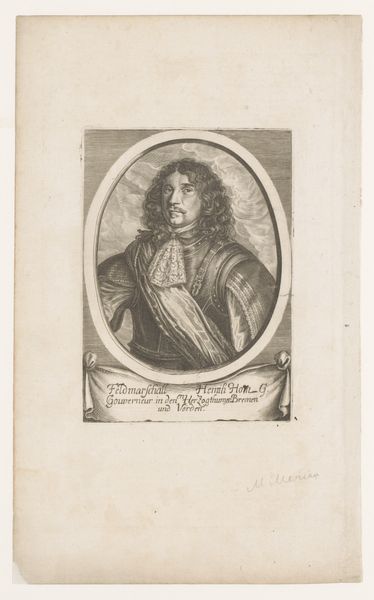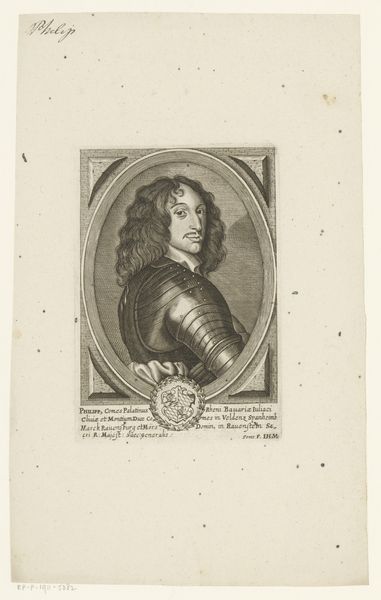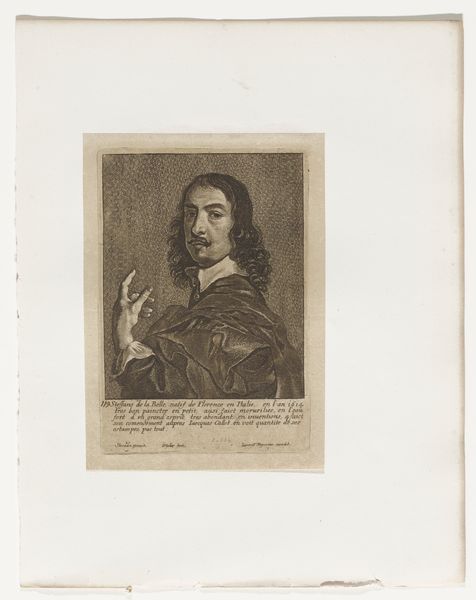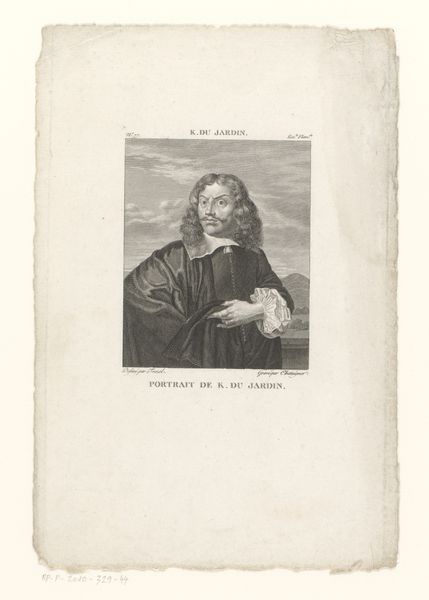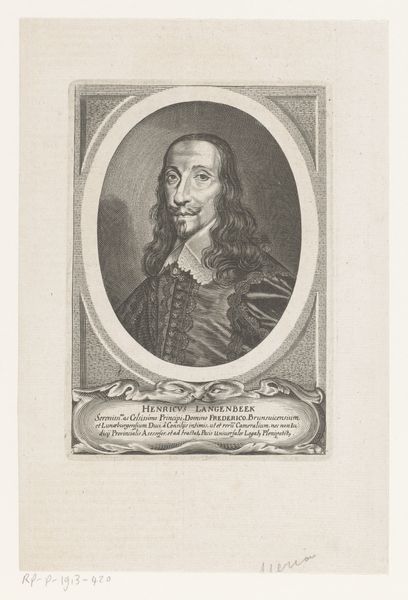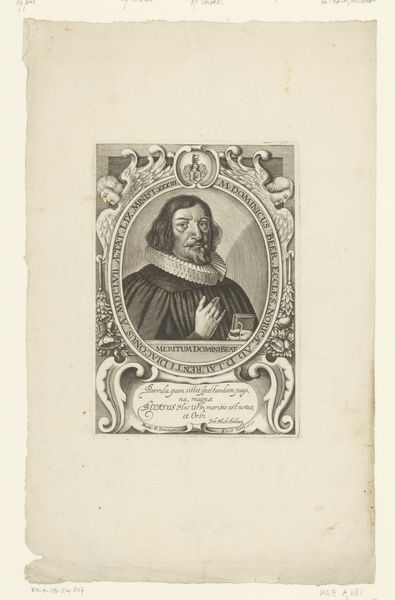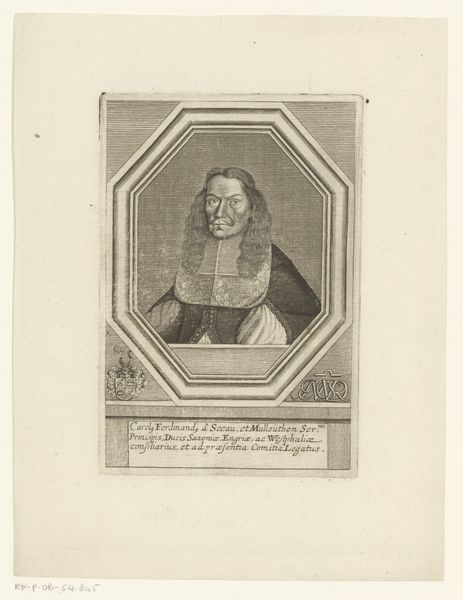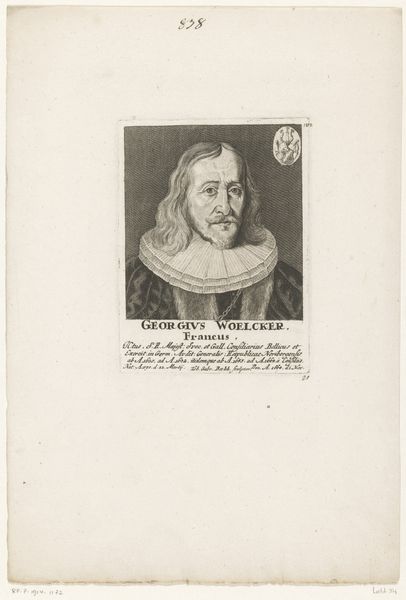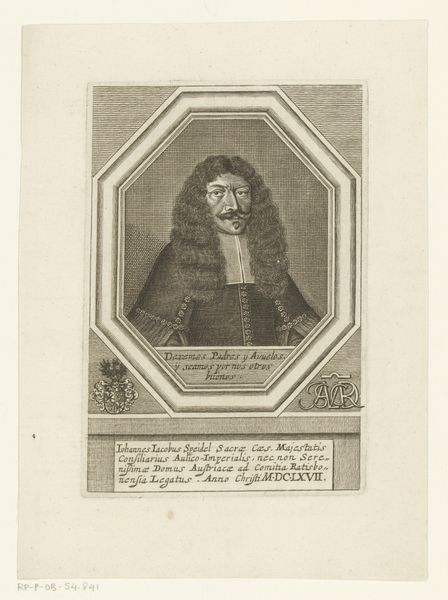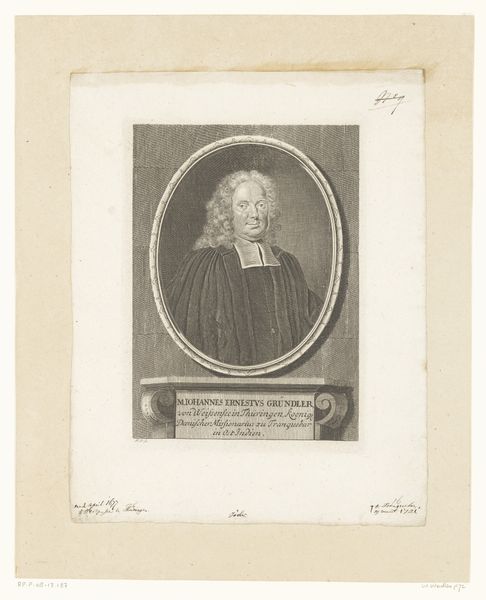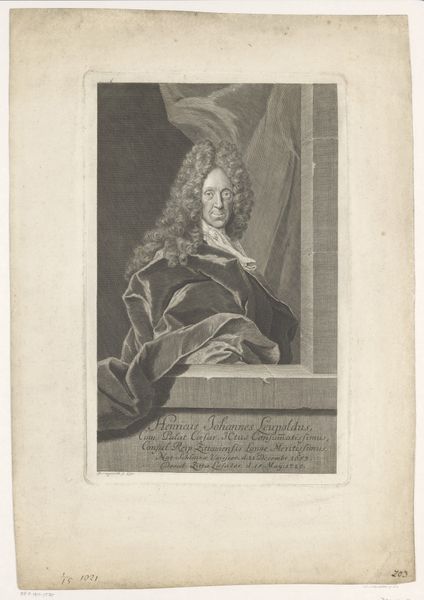
print, engraving
#
portrait
#
baroque
# print
#
engraving
Dimensions: 5 3/16 x 4 1/4 in. (13.18 x 10.8 cm) (image)7 11/16 x 6 1/2 in. (19.53 x 16.51 cm) (sheet)11 7/8 x 9 1/4 in. (30.16 x 23.5 cm) (mount)18 1/16 x 14 1/16 in. (45.88 x 35.72 cm) (mat)
Copyright: Public Domain
Curator: Up next we have Wenceslaus Hollar's "Portrait of Johannes Van Balen," an engraving dating back to 1611, currently held in the Minneapolis Institute of Art. Editor: My first impression is one of gentle confidence, if that makes sense. There's a soft light and relaxed pose. He seems approachable. Curator: Yes, Hollar created this during a period where printmaking was crucial in disseminating images and ideas. The Baroque style is clear. We see an emphasis on naturalism and emotion, departing from earlier, more rigid portraiture. Editor: Absolutely, notice how Hollar captures the texture of the hair, the lace collar, even the drape of the sitter's cloak using just line work. The detail is remarkable for an engraving. What kind of public figure would this sitter be? Curator: Johannes van Balen was a painter himself; therefore, this image serves the cultural role of advertising or legitimizing an artists standing within the cultural institutions and network. The print served the need to widely distribute images in Baroque society. Editor: I'm also drawn to how Van Balen's gaze meets the viewer's. There's an intelligence, maybe even a hint of melancholy, in his eyes. Hollar wasn't just copying likeness, but was actually imbuing the sitter with an actual persona. Curator: Precisely. The rise of portraiture in the Baroque period reflects society's changing focus. And indeed this portrait is more intimate than its stiff, medieval precedents; portraiture became crucial for shaping and consolidating social identities and bolstering patronage networks. Editor: Considering that context, the subtlety of Hollar's technique— the soft gradations of light and shade, and the expressiveness of the line work—speaks volumes about his mastery. Curator: It certainly adds nuance. In essence, it reveals the social power of artists in that time. Editor: And visually translates to a great artwork centuries later.
Comments
No comments
Be the first to comment and join the conversation on the ultimate creative platform.
